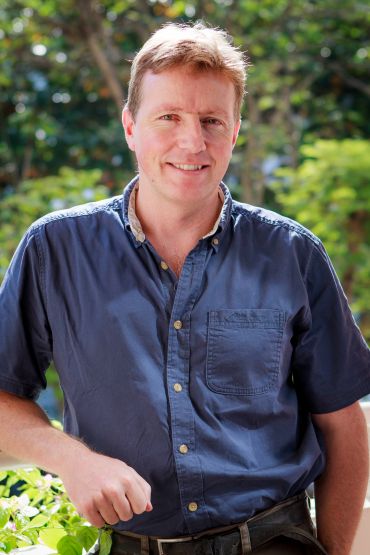Features
On 27 February 1854, the acclaimed composer Robert Schumann attempted suicide by jumping off a bridge into the Rhine. Although he was rescued by boatmen and brought home, he afterwards insisted on being placed in an asylum for his own and his family's good. He would spend the last two years of his life there, before dying of pneumonia at the age of 46.
For several years beforehand, he had been plagued by auditory hallucinations, erratic moods and depressive episodes — which historians speculate might have been the result of anything from bipolar disorder to syphilis or mercury poisoning. Despite these symptoms, he still experienced fits of creative energy, producing several pieces in this time, including the Maria Stuart songs and Lenau Lieder. Because of their radically different style to his earlier works, these have often been taken as a symptom of a tragic creative decline, the work of a man whose judgement was fatally impaired by the ravages of his illness.
But according to Laura Tunbridge, Professor in Oxford's Faculty of Music and Henfrey Fellow and Tutor at St Catherine's College, there is no reason to assume that. She says we might have been overly influenced by the work of his first biographers, as well as of his wife Clara and his younger colleagues Johannes Brahms and Joseph Joachim, who edited and compiled his work after his death. All of them wanted to conceal what they felt was a shameful detail about the great man's life, and, as a result, some of the later pieces have tended to be erased from discussion of his life's work.
Professor Tunbridge says: 'In the mid-19th century, there was a huge social stigma about mental illness. And so his family and his friends and his colleagues didn't particularly want people to know. And you can see that in the way the first biographers write about him — they assume that mental illness is going to have a detrimental effect.'
In fact, you often see a new period of experimentation in other composers' late works. There are many reasons why a composer might change their style which have nothing to do with their mental state. Professor Tunbridge thinks that the necessity to write for a more popular audience, to support an ever-growing family, as well as the influence of a younger generation of composers represented by Joachim and Brahms, probably had just as much of an impact on Schumann’s new musical direction. People have also tended to underestimate these works simply because they are written in a simpler, less ostentatious style.
Professor Tunbridge adds: 'Some composers — say, Beethoven — at the end of their career write these late works and people think they're amazing and radical and new and experimental. But with Schumann there's a sort of idea that his creative powers fall off and that they're not so significant. So I'm trying to figure out whether that's really the case or whether that's because of all the assumptions people make.'
As part of a Knowledge Exchange Fellowship with TORCH (The Oxford Research Centre in the Humanities) last year, Professor Tunbridge worked with Oxford Lieder to produce a series of podcasts, Unlocking Late Schumann, exploring Schumann's later works in conversation with performers and critics, to prompt reassessment of his work.
The collaboration also organised performances of these works for the annual Oxford Lieder Festival. Professor Tunbridge says that having these works performed is a crucial component to rescuing them from their critical obscurity: 'You can be a historian and say all these things about how wonderful these works are, but unless someone's actually going to sing them, it doesn't make any difference.'
She has also been thinking about how recitals can present works in ways that engage the audience and involve them in interpreting the pieces they are hearing, rather than simply giving them a programme note telling them what the music is 'about'. This resulted in some exciting and innovative programming, including a recital where Schumann's work was performed alongside some experimental modern composers who have been inspired by him.
Alongside the podcast, which can reach a wider audience than the demographic who usually attend classical music festivals, this represents a new approach to interpreting and appreciating Schumann. Professor Tunbridge hopes this can encourage appreciation of the composer's work, without preconceived notions getting in the way: 'As academics, we do all this educational work to try and explain things. But actually do we need that much historical context or do we need to encourage people to listen in a fresh way, without preconceptions?'
Professor Guy Thwaites, Director of the Oxford University Clinical Research Unit, Vietnam, explains the discovery of yet another use for one of the most ubiquitous and ancient of drugs – aspirin.
Tuberculous meningitis is the most lethal form of tuberculosis (TB), killing or disabling around half of all sufferers despite the best available treatment. Aspirin is a commonly available over-the-counter medication that prevents blood clotting and helps reduce and resolve inflammation. Our research team in Vietnam wondered whether this ancient drug might help increase survival rates from TB meningitis by reducing brain inflammation and preventing the disease from blocking blood vessels in the brain that cause parts of the brain to die (commonly called ‘stroke’).
With funding from the Wellcome Trust, UK, we investigated whether the addition of aspirin at low (81mg/day) or high (1000mg/day) dose, or placebo, to the first 60 days of current standard TB meningitis treatment (anti-TB drugs and steroids) was safe and reduced new strokes or death from this severe disease.
 Dr. Guy Thwaites - Director OUCRU-VN
Dr. Guy Thwaites - Director OUCRU-VNTo understand how aspirin might work in TB meningitis treatment we took brain fluid from the trial participants before and after 60 days of treatment and measured an array of substances known to be linked to inflammation and aspirin’s treatment effects. When we compared 81mg with 1000mg of aspirin we found that 1000mg was associated with much lower concentrations of thromboxane A2, which would inhibit the blood’s ability to clot and may help prevent stroke. We also found higher concentrations of molecules called ‘protectins’ which help the body resolve inflammation. These findings are especially interesting as they may indicate new ways to treat TB meningitis and other forms of TB, and they support the trial’s clinical findings that aspirin 1000mg/day may reduce the risk of stroke and increase survival rates in patients.
The next step will be larger trials in children and adults, including those co-infected with HIV, to confirm our results. But it seems TB meningitis may be added to the long list of life-threatening conditions that benefit from a daily aspirin dose, including stroke, heart attacks, and the prevention of colorectal cancer.
While aspirin was developed as a drug in the form we now recognise in the 19th century, the active compounds occur naturally in willow bark and other plants, and humans have been using it in its natural form for thousands of years. There is evidence of ancient Egyptians using willow bark as a medicine, and the ancient Greek physician Hippocrates wrote about the benefits of willow bark and willow leaves to relieve pain and fevers. Nowadays, aspirin should be used in consultation with a doctor to minimize any side-effects. However, this study has shown more evidence that aspirin is indeed a remarkable drug.
The full paper, ‘A randomised double blind placebo controlled phase 2 trial of adjunctive aspirin for tuberculous meningitis in HIV-uninfected adults’, can be read in the journal eLife Sciences.
An Oxford research project mapping all the hillforts across England and Ireland, has been lauded by industry leaders at the American Association for the Advancement of Science (AAAS) conference, Austin, Texas, as one of the best examples of multidisciplinary research in the UK.
Selected as the only Arts and Humanities Research Council (AHRC) funded project to be presented at the AAAS Conference, the atlas was built in collaboration with the University of Edinburgh and the support of citizen scientists across the country. The survey was five years in the making and includes information on all of the hillforts in Britain and Ireland – 4,147 in total, collated into a publicly accessible website.
The AAAS Conference attracts more than 8000 delegates from broad ranging fields including academic science, government policy and more general interests.
Professor Gary Lock, co-principal investigator on the project and Emeritus Professor of Archaeology at Oxford University and John Pouncett, also of The School of Archaeology, Oxford University, attended the event alongside Professor Ian Ralston co-principal investigator and Professor of Archaeology at Edinburgh University, to demonstrate the atlas to attendees who also included school age children and their parents.
Professor Lock said, ‘To be chosen as the single project to represent the AHRC at the AAAS is an incredible honour that verifies the importance of our work and shows the leading position of archaeology within international humanities and scientific research.'
The unique resource provides free access to information about world-famous sites as well as many previously little-known hillforts, helping ramblers, cyclists, naturalists, and history enthusiasts discover them and the landscapes around them.
Mostly built during the Iron Age, the oldest hillforts date back to around 1,500BC and the most recent to around 700AD. Hillforts played a pivotal role in more than 2,000 years of ancient living and served various functions, such as defence and communal gathering spaces, while other uses have yet to be fully understood.
Terry O’Connor, Communications Director at the Science and Technology Facilities Council and lead for the UKRI AAAS campaign said: ‘We selected the Hillforts Atlas exhibit as an excellent example of the best of UK multidisciplinary research – combining archaeology, remote sensing, citizen science and other techniques to provide not only a new research tool but an exciting way of engaging the public with research. The team of Gary, Ian and John were fabulous ambassadors for the project, their science and their universities.’
Mike Collins, Head of Communications at the Arts and Humanities Research Council, said: 'The Hillfort Atlas project was the ideal fit for the AAAS conference in Texas as it showcases brilliantly the use of technology to tell the story of hillforts across the UK and Ireland. The Atlas was one of the public engagement hits of 2017 with hundreds of thousands of people visiting the website and an amazing reaction in the media and through social media. It's been a great example of how years of hard research work can pay dividends and get the public excited about the history of where they live or a place that they love to go on holiday too.'
Since its launch in June 2017 the Atlas website has been a tremendous success with the general public, students, academics and a range of environmental specialists. The site is still being developed with new functionality and analytical capabilities to be added.
Fort finder: An atlas of the hillforts of Britain and Ireland:
If you were asked to name a weapon used in World War I, you’d probably think of gas attacks, or artillery, or tanks.
But another unusual weapon was battering people across the world, and caused suffering long after the bell tolled on the 11th November 1918. It wasn’t a new invention: it was hunger.
Dr Mary Cox and Dr Clare Morelon, early career researchers in the History Faculty, and Principal Investigator Professor Sir Hew Strachan, are leading a groundbreaking international research project that is exploring how one of our most basic requirements—food—shaped World War I and its aftermath.
The Hunger Draws the Map project is revealing how the Great War, including a British and French blockade that prevented ships carrying food and weapons from getting to Germany, Austria-Hungary, Bulgaria, and Turkey until 1919, caused malnutrition and starvation across Europe and the Ottoman Empire - for years after the war ended.
“There was so much suffering in the world after the war was over,” says Dr Cox. “Yes, there’s the terrible stuff you hear about—injured soldiers, people who were maimed—but during and after the war, people were hungry.”
And debates have been raging for a hundred years about just how hungry people were. “We’re actually plugging into a debate that goes back a hundred years,” Dr. Cox says. “Some call it a myth; others say people were dying on the streets.”
By using innovative new methods and making thematic comparisons, Dr Cox and the team, working with an international group of researchers, are working on a book that will try to trace just how hungry populations were, and what effect this had on the post-war world.
The project is trying to understand hunger in lots of different ways. This involves looking at how much food was available and measuring the growth curves and weights of people at the time. But it also means thinking about hunger in other ways.
“How did states understand food security? What were the political responses to hunger? Who did everyone blame?” Dr Cox asks.
In Germany, farmers often got the blame. “People in the cities accused farmers of keeping their food for themselves, rather than giving it to people in towns and cities.”
And how did being hungry change the way people lived their lives? “The black market was huge, and people smuggled food when they could,” Dr Cox explains.
“But hunger also changed how people behaved. If you had an occupation where you physically needed to work a lot--swing a hammer, wash laundry, walk miles to get to a factory—that burned calories. People limited their physical activity in order to survive.”
And, with so little food, people had to resort to survival strategies. “People tried to grow gardens, or share what they had with their loved ones. In Germany, women sacrificed themselves for their children.”
Not many people know about how hunger was used as a weapon in this way, but Dr Cox says the impact was vast.
“This story really needs to be told and understood,” she says. “This war affected the rest of the twentieth century.
"Hunger is such a horrible, horrible thing to experience, people don’t forget very easily. People lost trust in their governments, sometimes their neighbours, and social divisions were often amplified.”
And, at root, this is a story about everyday people.
“Hunger is experienced on an individual level, so even though there were millions of people, we’re trying to put individual faces to their suffering,” Dr Cox says.
Together, the Hunger Draws the Map team are working on a thematic book that explores all of these issues from a comparative, international perspective, from Finland to the Netherlands to Bohemia. By doing so, they encourage us to remember, as we celebrate the centenary of the end of the war in 2018, how hunger drew the post-war map.
Proteins in cells underpin many of our most important functions, from muscle contraction to breaking down food. In a new study published in the journal Science, researchers from the universities of Oxford and Massachusetts explore how these proteins assemble into the 'complexes' that allow them to perform their specific tasks. Two of the paper's authors, Professor Justin Benesch from Oxford's Department of Chemistry and Dr Georg Hochberg, formerly of Oxford and now of the University of Chicago, discuss the study's findings.
What are proteins, and what role do they play within organisms?
Proteins are the biochemical workhorses of cells. They make muscles contract, break down food, replicate genetic material, and underlie our senses. To perform these important functions, most proteins assemble into so-called complexes. A complex consists of several individual proteins chains that associate in a precise and stable geometrical arrangement.
What did we previously know about how proteins assemble and interact? What didn't we know?
Protein complexes are incredibly specific. Each cell contains thousands of different proteins, each of which is only part of a small number of complexes. So proteins have to be able to recognise their assembly partners with incredible fidelity, excluding from their assemblies the vast majority of other proteins. In general, proteins that interact to form a complex have three-dimensional structures that fit together tightly, with surfaces that display a high degree of shape and charge complementarity – that is, they fit together in both shape and with charges attracting rather than repelling each other.
But somehow many proteins also exclude other proteins from their complexes that have very similar shapes compared to their proper interaction partners. This happens because new protein complexes are often created by evolution through gene duplication, a kind of copy-paste mechanism in which two initially identical copies of a single ancestral complex are produced. Because their three-dimensional structures will be identical at first, the two copies initially always co-assemble into a complex together. But in many cases, they gradually 'forget' how to do this, and eventually only form two separate complexes – one containing only protein chains from the first copy, the other only chains from the second copy. Why proteins become selective in their assembly like this, as well as how they achieve it structurally, was completely unknown.
What did this research find?
We first found, by looking at many proteins from a variety of organisms, that proteins avoid co-assembling with the majority of their gene duplication copies and that this allows the two copies to carry out different biochemical functions. This means that 'forgetting' how to co-assemble with their gene duplication relatives is a key step in the evolution of novel biochemical functions.
We then worked out exactly how selective assembly is achieved structurally between two small heat-shock plant proteins that were created by gene duplication. Small heat-shock proteins protect other proteins from the dangerous effects of heat stress. Both proteins we studied assemble into complexes with only their own protein chains, but do co-assemble into complexes containing both kinds of chains.
To our great surprise, the two proteins had near-identical structures, with no clear sign of an absence of shape or charge complementarity that would prevent them from co-assembling. Instead, we found that evolution achieved selectivity in the most economical fashion, modifying only a minimal number contacts between the proteins, and exploiting very subtle differences in the way the two proteins deform as they assemble into their specific complexes. We could also show theoretically that such selectivity should be easier to achieve for complexes containing fewer protein chains, and that this has left a measurable imprint in the number of chains selective complexes actually contain in nature.
This was a highly collaborative piece of work, between biophysical chemists in Oxford and plant scientists at the University of Massachusetts, and required us to use a broad range of methods, from theoretical statistical mechanics, to computer simulations and experiments to determine the molecular structure of the proteins, to functional investigations on pea leaves.
What are the implications of this research?
Our results imply that a major rethink of the determinants of molecular selectivity in proteins is required, away from simple shape and charge complementarity. In addition, our data has demonstrated the selectivity in assembly of small heat-shock proteins is an important part of their function, and may give us new opportunities in developing more thermally resistant plants.
- ‹ previous
- 75 of 248
- next ›





 The hidden cost of AI: In conversation with Professor Mark Graham
The hidden cost of AI: In conversation with Professor Mark Graham  Astrophoria Foundation Year: Dr Jo Begbie reflects on the programme’s first year
Astrophoria Foundation Year: Dr Jo Begbie reflects on the programme’s first year World Malaria Day 2024: an interview with Professor Philippe Guerin
World Malaria Day 2024: an interview with Professor Philippe Guerin From health policies to clinical practice, research on mental and brain health influences many areas of public life
From health policies to clinical practice, research on mental and brain health influences many areas of public life From research to action: How the Young Lives project is helping to protect girls from child marriage
From research to action: How the Young Lives project is helping to protect girls from child marriage  Can we truly align AI with human values? - Q&A with Brian Christian
Can we truly align AI with human values? - Q&A with Brian Christian  Entering the quantum era
Entering the quantum era Can AI be a force for inclusion?
Can AI be a force for inclusion? AI, automation in the home and its impact on women
AI, automation in the home and its impact on women